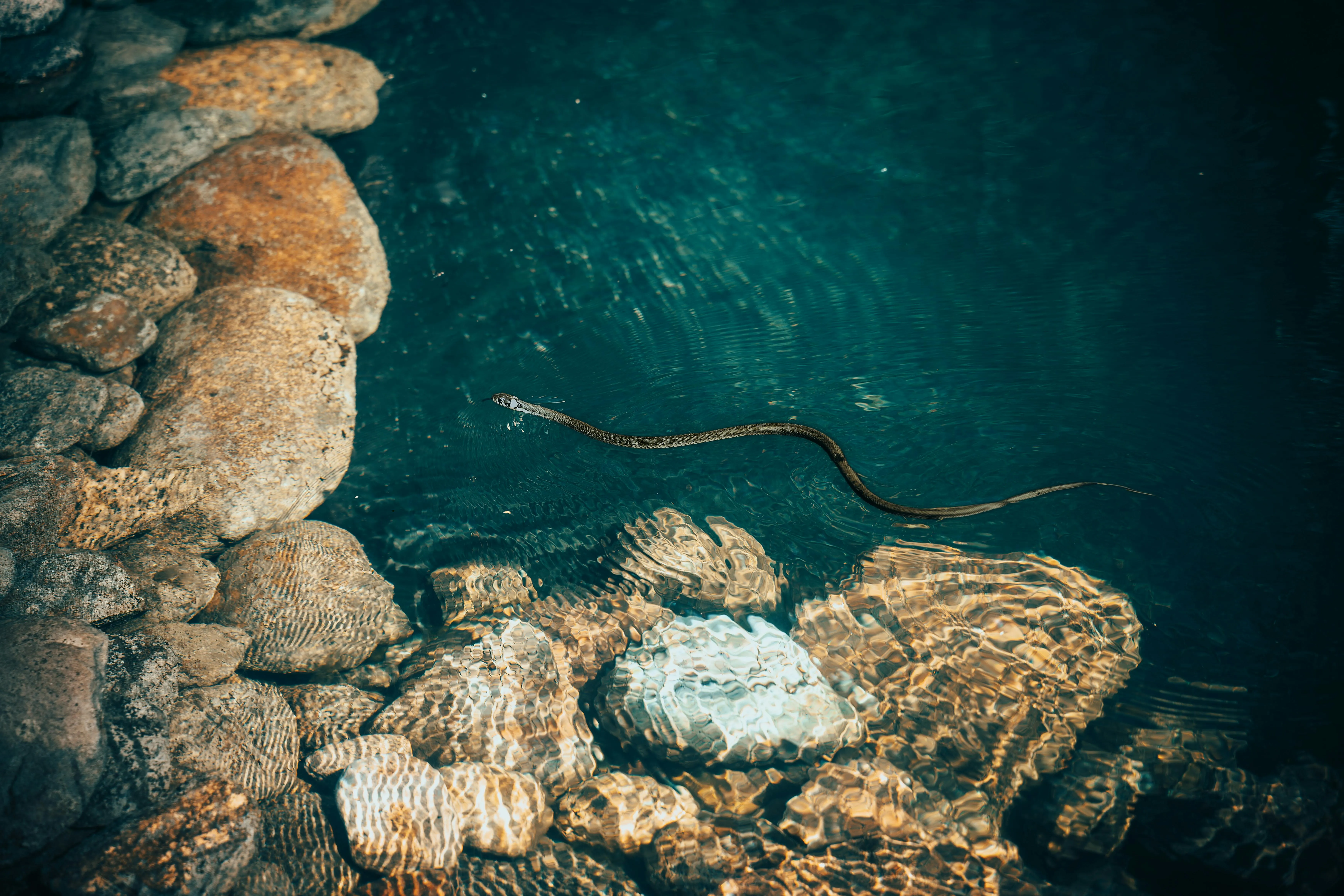Discover Palaeophis Colossaeus, the Largest Sea Snake from the Ancient Eocene Era
Palaeophis colossaeus, a formidable sea snake from the lower Eocene epoch, once reigned as one of the largest among its kind. Existing in a period marked by the evolution of various animal groups, including mammals, birds, and marine species, this ancient serpent stood out for its colossal size, rivaling that of a school bus.

With insights gleaned from their research, scientists unraveled key details about the size, habitat, and evolutionary characteristics of Palaeophis colossaeus. This exploration sheds light on the snake's adaptation to ancient marine environments and its role in the ecological history of the Trans-Saharan region.
The Extinct Genus Palaeophis: Diversity and Adaptations
Belonging to the extinct genus Palaeophis, this ancient sea snake thrived during the Eocene epoch. Other species in this genus, such as Palaeophis maghrebianus in Morocco and Palaeophis virginianus in North America, shared common characteristics while exhibiting unique adaptations.
Palaeophis colossaeus, presumed to be one of the larger species in the genus, showcased distinctive skeletal features, including robust and broad vertebrae. These skeletal differences set it apart from other species in the genus, hinting at its potential for a slightly narrower and more elongated body.
Modern Analogues: Pythons and Anacondas
In terms of size and aquatic lifestyle, Palaeophis colossaeus finds modern counterparts in large marine pythons and anacondas. Species like the reticulated python and the green anaconda, with their substantial size and semi-aquatic habits, share similarities with the ancient sea snake. However, it's crucial to note that these modern snakes belong to different families and evolved independently.
Habitat and Era
Inhabiting what is now North africa during the Eocene epoch, Palaeophis colossaeus thrived in the ancient Tethys Sea. This sea, existing between the supercontinents of Gondwana and Laurasia, provided a diverse ecosystem for marine life. The Earth's warmer climate and higher sea levels during the Eocene created extensive shallow marine environments, ideal for the large, predatory sea snake.
Size Variations and Fossil Records
Fossil records suggest that Palaeophis colossaeus holds the title for the largest oceanic snake in history. However, estimations vary due to differences in specimen sizes. Some fossils indicate a length of 40.4 feet (12.3 meters), while others suggest 26.6 feet (8.1 meters). Despite these variations, one certainty remains – encountering any Palaeophis species in the wild would be an awe-inspiring, albeit intimidating, experience.
Bony Adaptations and Evolution
Within the Palaeophis genus, species are categorized into "primitive" and "advanced" groups based on their skeletal features. Palaeophis colossaeus falls into the "primitive" group, characterized by robust vertebrae. Although lacking some swimming adaptations seen in the "advanced" group, the snake's broad vertebrae suggest aquatic tendencies, inviting ongoing studies into its swimming abilities.
Did Palaeophis Colossaeus Consume Whales?
The notion of Palaeophis colossaeus feasting on whales stems from its imposing size and the coexistence of smaller whale species in its ancient habitat. Similarities with modern marine predators targeting smaller marine mammals support the hypothesis of the sea snake including smaller whales in its diet. While intriguing, this theory remains speculative, requiring further investigation into the sea snake's feeding habits.

Dietary Enigma and Potential Prey
The dietary habits of Palaeophis colossaeus present a puzzle, compounded by the absence of cranial fossils. Examination of related species' skulls suggests a potential for large prey consumption. The sea snake's size likely deterred most predators, leaving large dyrosaurids and sharks as potential threats.
Palaeophis Colossaeus: A Glimpse into Ancient Marine Wonders
While mysteries surround its diet and lifestyle, Palaeophis colossaeus stands as a testament to the marvels of ancient marine life. Uncovering its evolutionary traits and ecological role contributes to our understanding of the prehistoric world and the colossal creatures that once navigated Earth's oceans.

No comments:
Post a Comment